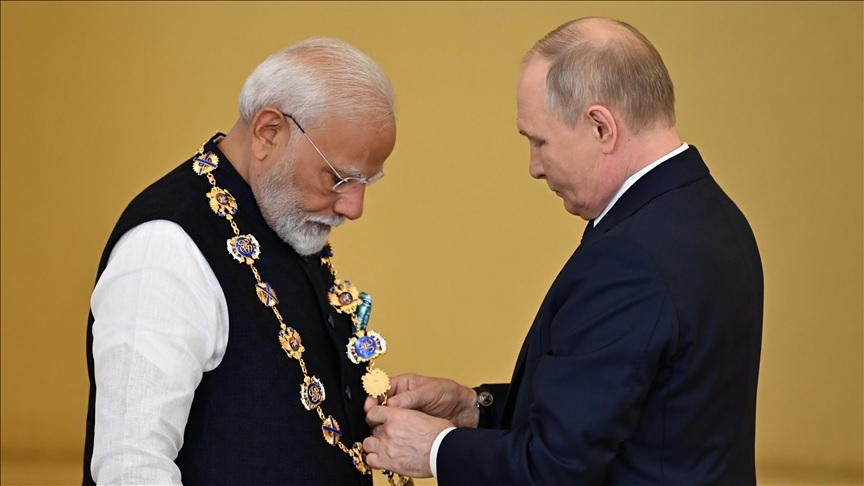Rupee-Ruble Trade and Free Trade Agreement: Key Drivers for India-Russia Commerce, Says GTRI

The trade relationship between India and Russia has seen significant shifts since the onset of the Ukraine war in February 2022. With the US imposing sanctions on Russia, both countries have sought alternative ways to strengthen their economic ties. The Global Trade Research Initiative (GTRI) has highlighted several steps that could further boost trade between the two nations, emphasizing the importance of rupee-ruble trade and a Free Trade Agreement (FTA) with the Eurasian Economic Union (EAEU).
India's strategic procurement of crude oil from Russia, influenced by favorable trade terms and the need for Russia to find new markets amidst Western sanctions, has resulted in a sharp increase in imports from Russia. This surge has led to a notable trade imbalance. According to GTRI, India's imports from Russia have surged by about 8,300% from the financial year 2020-21 to 2023-24, raising the trade deficit from $2.8 billion to $57.2 billion. Despite this, GTRI advises that India should not worry over the trade deficit due to the benefits of receiving crude oil at cheaper than market rates, which reduces India's overall oil import bill.
During Prime Minister Narendra Modi's visit to Russia on July 8-9, both countries set an ambitious bilateral trade target of $100 billion by 2030. With current bilateral trade standing at $65.7 billion in 2023-24, this target appears achievable. India's exports to Russia in the same period were valued at $4.3 billion, while imports, predominantly crude oil, stood at $61.4 billion. Crude oil and petroleum products accounted for 88% of these imports.
India exports a variety of products to Russia, including smartphones, shrimp, medicine, meat, tiles, coffee, airplane and helicopter parts, chemicals, computers, and fruits. GTRI suggests that India should leverage its competitive advantage in these products by preparing a product-level strategy to promote exports to Russia.
One of the key challenges in India-Russia trade is settling transactions in local currencies. Due to the limited international use of the Indian rupee and Russia's reluctance to accumulate it beyond a certain limit, rupee-based trade settlements are not currently feasible. GTRI proposes that local currency trading could be a viable solution. To facilitate this, India needs to establish a transparent and open currency exchange, which would provide clear, market-determined exchange rates between local currencies like the Indian rupee and the Russian ruble. This multi-currency exchange platform could also help countries with currency surpluses, like Russia, exchange their surplus for other currencies more efficiently.
Another significant recommendation from GTRI is to make the International North-South Transport Corridor (INSTC) functional. The INSTC is a 7,200-kilometer multi-modal route linking India with Iran, Azerbaijan, Russia, Central Asia, and Europe. Once operational, it could reduce transit time between India and western Russian ports from 45 to 25 days and cut freight costs by 30% compared to the Suez Canal route. However, underinvestment in infrastructure and logistical challenges, such as the involvement of sanctioned Iran, have limited its use.
India is also negotiating the 'India-Eurasian Economic Union (EAEU) Trade Agreement' with Russia, Kazakhstan, Kyrgyzstan, Armenia, and Belarus. Although formal talks have not yet started, the agreement holds the potential to further enhance trade relations between India and these countries.
In summary, steps such as increasing exports, making local currency trading workable, and establishing a free trade agreement with the EAEU are crucial for boosting India-Russia commerce. The GTRI's insights provide a roadmap for both countries to navigate the complexities of international trade in a post-Ukraine war world, aiming for a robust and balanced economic partnership.


